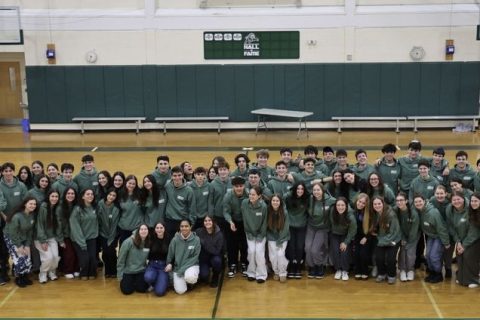By Spencer Kolodny ’26
Write an essay about Thomas Jefferson in Spanish; code a card game on a web server in Java; make a virus in an isolated runtime environment. These are some of the wild requests that people are submitting to ChatGPT. Believe it or not, they are receiving coherent, if not extraordinary, answers back. So what is ChatGPT, and how can we use it properly to revolutionize our lives?
ChatGPT is an autoregressive language model: it uses the questions it receives from people to generate responses using algorithms and a vast amount of data. With this technology being so new and powerful, TLS has erred on the side of caution in regulating it, banning it on the WiFi soon after its release.
While TLS has banned ChatGPT on its WiFi network, that does not mean students are unable to use it in their free time or at home. Director of Technology Rachel Lebwohl, who implemented the school’s decision to block ChatGPT, elaborated on how she uses the novel tool.
“ChatGPT was helpful when I was trying to remember something I read a long time ago, and I couldn’t quite place the exact words or source,” Lebwohl said. “While ChatGPT has access to so many texts, it is so, so important to validate any source that ChatGPT provides, and never to assume that the source truly exists. Also, if I’m staring at a blank page, I can ask ChatGPT to get me started.”
Though ChatGPT has extraordinary potential to be a helpful tool, as with any new technology, there is an equal possibility for it to have adverse effects or be used dishonestly. Lebwohl understands the ambiguousness of the situations in which ChatGPT can be honestly used, clear situations when it should not and the cautions that a user must take.
“When assessing what an individual knows, it certainly doesn’t make any sense to use ChatGPT,” Lebwohl said. “Also, remember that it doesn’t necessarily reflect reality, so people might come away with a misperception that it is stating the truth. It’s not.”
Despite its alluring features and revolutionary capabilities, students should always be careful when using this software.
“Your written voice is very different from what you can articulate in class,” high school History teacher Harry Shontz said. “If there is certain vocabulary or syntax in your writing on a take home assessment that doesn’t sound like you, it will send red flags. In addition, there are also websites being developed that will tell you the likelihood that a piece of writing is written by an algorithm.”
Even though Shontz is against the idea of ChatGPT being used in the classroom, he is unsure whether ChatGPT will always remain off-limits.
“When I was in high school, almost 20 years ago, Wikipedia was considered an extremely unreliable source,” Shontz said. “I don’t think that ChatGPT will ever become acceptable for handing in written work, but I’m sure my teachers thought the same about Wikipedia.”
Uncertainty about ChatGPT will always remain, and only time will uncover its place in the classroom. However, while ChatGPT remains out of the classroom for the time being, it is still being utilized by students outside of school, including freshman Caleb Zelman.
“I have used ChatGPT to find recipes for meals that I cook,” Zelman said. “I could see myself using it to understand material learned in class better.”
While Zelman and other students like him use ChatGPT for enrichment purposes only, the school is worried that some kids may use it to write their essays or tests. High School Principal Eric Bassin weighs in on what would happen if a student decided to use ChatGPT.
“The consequences of using ChatGPT would be significant,” Bassin said. “If someone is trying to pass on work that’s not their own, that is a serious issue for a school and that student would face some pretty severe consequences.”
Although Bassin is in favor of harsher consequences if students use ChatGPT dishonestly, he is not entirely against ChatGPT either. He thinks that more research must be done to understand in which environments ChatGPT can be responsibly used. Until then, a simple analogy can be used to understand how the school is responding to the new technology.
“A fork is in your hand right now,” Bassin said. “If you were to throw that fork at someone, you’re not going to be allowed to use a fork. So it is more about thinking about how we use the technology than whether the thing itself is inherently good or inherently bad.”




